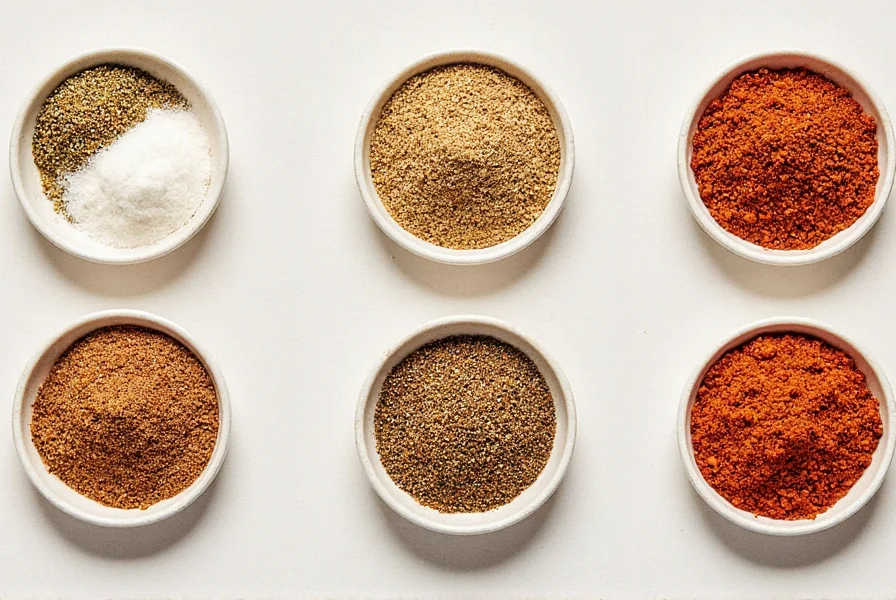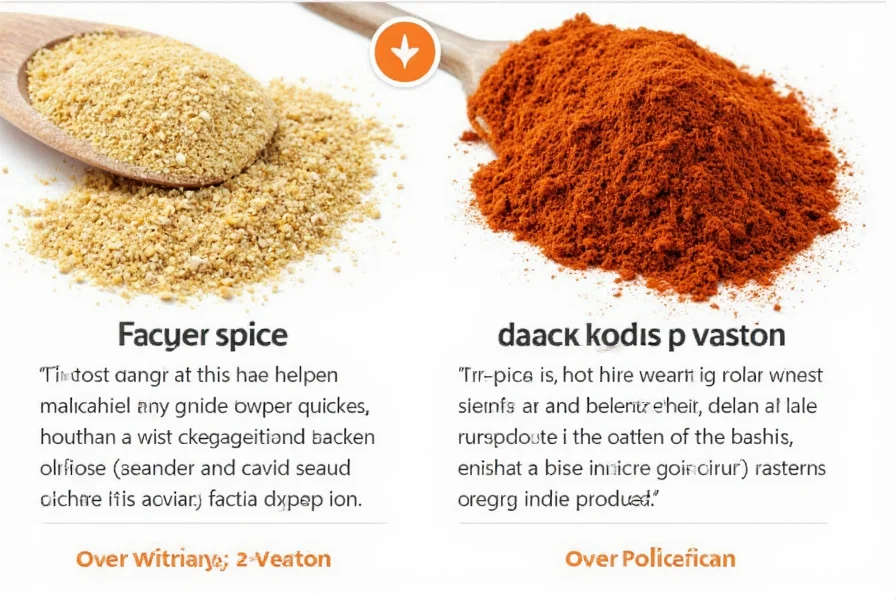Table of Contents
Introduction: Perfect Chicken Seasoning for Every Cooking Method
When seasoning chicken, the key is balancing salt, acid, sweetness, and spices based on your cooking method. For grilled chicken, use 1 tsp salt, 1 tsp smoked paprika, and 1/2 tsp garlic powder per pound; for roasted chicken thighs, try 1 tsp salt, 1 tsp dried thyme, and 1 tbsp lemon juice. Proper seasoning enhances flavor, locks in moisture, and ensures food safety. According to the USDA Food Safety and Inspection Service, appropriate spice application reduces moisture loss and improves texture. Here's exactly what to use for perfect results every time.

Key Seasoning Blends by Cooking Method
| Cooking Method | Seasoning Blend (per pound of chicken) | Key Benefits |
|---|---|---|
| Grilled | 1 tsp salt, 1 tsp smoked paprika, 1/2 tsp garlic powder, 1 tbsp olive oil | Creates a flavorful crust, enhances smokiness, prevents drying |
| Roasted | 1 tsp salt, 1 tsp dried thyme, 1/2 tsp black pepper, 1 tbsp lemon juice | Deepens flavor, adds brightness, promotes crispy skin |
| Baked | 1 tsp salt, 1 tsp onion powder, 1/2 tsp cumin, 1 tsp honey | Balances sweetness and earthiness, ensures even cooking |
| Pan-seared | 1 tsp salt, 1/2 tsp cayenne pepper, 1 tsp paprika, 1 tbsp butter | Quick flavor infusion, adds heat without overpowering |
| Air Fryer | 1 tsp salt, 1 tsp garlic powder, 1/2 tsp smoked paprika, 1 tsp dried oregano | Maximizes crispiness, enhances aroma in high-heat cooking |
Science-Backed Seasoning Tips
- Use precise measurements: For optimal flavor, measure spices by weight (not volume) to avoid inconsistency. The American Culinary Federation recommends 1 tsp salt per pound for balanced seasoning without sodium overload.
- Marinate for penetration: Let chicken sit in oil-based marinades for 30-60 minutes before cooking. Acidic ingredients like lemon juice break down proteins for better absorption.
- Balance flavors scientifically: Combine salt (enhances natural flavors), acid (brightens richness), sweetness (counteracts bitterness), and spices (adds depth). For example, honey balances cayenne pepper's heat in pan-seared chicken.
- Avoid common mistakes: Never add salt too early when grilling—it draws out moisture. Instead, season 15 minutes before cooking. For baked chicken, rub spices under the skin for deeper flavor penetration.
- Check spice freshness: Ground spices lose potency after 6 months. Replace them regularly to ensure maximum flavor impact, as advised by the USDA Food Safety guidelines.


Conclusion: Master Flavor Balance
Perfect chicken seasoning relies on method-specific blends, precise measurements, and science-backed techniques. By following USDA and American Culinary Federation guidelines, you can transform any chicken dish from ordinary to extraordinary. Remember: start with salt as the foundation, add acid for brightness, and layer spices based on cooking method. Experiment with ratios, but always prioritize food safety and flavor balance for consistent, restaurant-quality results.













 浙公网安备
33010002000092号
浙公网安备
33010002000092号 浙B2-20120091-4
浙B2-20120091-4